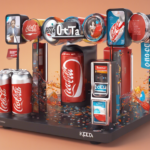How do I get users to convert on landing pages? There are a number of decisive factors here. Here are some of the most important points for the perfect landing page in article form, including an infographics.
Landing pages are a wonderful way to quickly and efficiently stage products, services and services. The use of landing pages as an essential touch point between brands and users should not be missing in any customer journey. We show what to look out for when creating a landing page, how it should be structured and how more conversions can be achieved.
What is a landing page?
A landing page is a single page that users land on to take a specific action. Landing pages are ideally detached from the rest of the website structure in order to distract users as little as possible from the goal. The fulfillment of this goal is called conversion.
What is the goal of landing pages?
Landing pages are used for marketing purposes to convince visitors of a service or product through different channels.
Typical landing page goals can be:
- Contact in the form of a request via the form
- Purchase of a specific product
- Use of a specific service or service
- Registration for events or appointments
For website operators it is about gaining information about the respective user in order to use it for further marketing purposes e.g. B. to be able to use remarketing or the formation of target groups with similar interests and digital behavior.
10 points for the perfect landing page
- What requirements does a landing page have to meet, what must be prevented? Here are some of the most important points for the perfect landing page including an infographics based on our experiences.
- The landing page checklist:
- These points should definitely not be missing around a landing page:
- Headline
- The sub headline
- Bullet Point Lists
- Testimonials and trustworthy information
- Call to Actions
- A separate menu
- cover photo
- Explanatory content below the fold
- Conversion elements always in the visible area
- Running tests
1.) The headline should be as meaningful as possible
Users mostly get to landing pages via ads or campaigns. The information must therefore coincide with that on the display. A short, meaningful headline is advisable in order to make the core information quickly comprehensible. Egg “The # 1 Landing Page Software”.
2.) The sub headline should communicate essential information
The sub headline helps to highlight basic information and supports the headline. An “explanatory” headline is advisable here. Egg “Try now for 14 days free of charge and without obligation”.
3.) The greatest advantages and USPs should be presented in bullet point lists
There are often only a few seconds left to turn a user into a customer. For this reason, it is particularly important with landing pages to make the necessary information quickly accessible. For this reason, we rely on bullet points or lists in order to present the greatest advantages. These should be in the initially visible area (Above the Fold) and so immediately recognizable when the page is initially called up.
4.) Present testimonials and trustworthy information
We humans are creatures of habit. The unknown often scares us. For this reason, we advise you to receive testimonials and trustworthy information, e.g. B. Placing logos of well-known media in which the service or product was mentioned high on the landing page.
5.) Call to Actions are an essential success factor
The call to action serves as a direct request for action and is usually displayed in the form of a conspicuous button. This can stand out a little from the rest of the design of the page in order to attract even more attention.
Important: Customers keep asking us whether one or two CTAs are better. Often these have two different conversion goals and both are justified. Opinions differ, which is why a test run with one or two CTAs at a time is advisable. However, it is important that these are used consistently across the entire site, use the same wording and are not in competition with one another.
6.) A separate menu and no outbound links are mandatory
An essential feature of a landing page is its independence. In other words: it works without the actual website and is only geared towards one purpose. Further links and cross-links to the actual homepage should be avoided in order to keep users on the landing page. For this reason, the menu should also be independent and not represent that of the website. We like to work with anchor link menus. These execute a scroll link within the landing page.
7.) Cover picture must match the content
The cover picture is not only a real eye-catcher and one of the elements that immediately catches the eye. It also serves as an information medium to support the text next to it and to visually depict the information explained there. We believe that beautiful product images or people who interact with the product or service work best. But also explanatory screens in software, for example, can bring the desired success.
Important: stay away from stock images! These are simply used too often and in too different areas. As a result, they radiate less seriousness.
About using a video: We advise against using a title video. The loading time usually leads to delays in the presentation of content. It is particularly important to prevent this with landing pages, where the rapid transport of information is essential. For this reason, videos should only follow below (below the fold).
This great article is written and published by the marketing team of Digital Gravity web development company Dubai









